Streamers & pulling flies
{{start}}
It’s a subtle distinction between what I consider streamers and pulling flies and what I consider ‘loch style flies’ . The main difference for me is that whilst each of the flies below work well in a team of flies they also fish well by them selves. My favorite woolly bugger flies and some of nymphs such as my damsel nymph and my mudeye are the same. The flies in my ‘Loch’ selection are different. Sure you could fish them on their own but by in large I regard each of my ‘Loch’ flies as fishing best when fished in a team of flies. There are heaps of flies to choose from. These are the ones I carry in my Lake fly box along with my Lock flies.
{{end}}
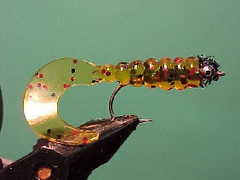
{{+1}}Cresent tail soft plastic fly{{-1}}
{{start}}
As the name implies these flies are built using a soft plastic lure body. I like to use 2" and 3" crescent tail type soft plastics as they tend to have a little more movement than some of the alternatives. For general prospecting or when targeting bream and whiting I use the 2" version and when I am targeting flathead I use the 3" version.{{end}}
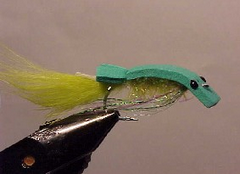
{{+1}}Wiggle minnow{{-1}}
{{start}}
By varying the materials used, the colours and size I have accounted for trout, bream, flathead, mangrove jack and even barramundi on wiggle minnows. The recipe I have set out below is just one version of this very adaptable fly and I would encourage you to individualize the fly to your own requirements.{{end}}
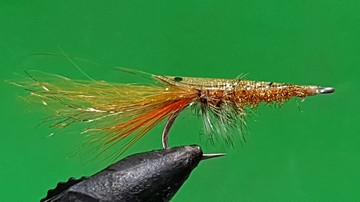
{{+1}}PET shell prawn{{-1}}
{{start}}
Prawns and shrimp are crustaceans, of the family Isopod, and are endemic to our Australian estuary waters. They are toward the top of the food chain for a lot of coastal species of fish including bream, flathead and whiting.{{end}}

{{+1}}Soft hackle winged bob flies – Chatto’s version{{-1}}
{{start}}
Whilst it has been tweaked at the edges a little this Mallard & Claret pattern remains remarkably similar to the original fly pattern that has its origins in England some 500 odd years ago except for the introduction of a fuzzeled body rather than a hackled body and a soft wing instead of feather slip wings. I carry both the mallard and claret and an olive version of this fly in my lake fly box.{{end}}
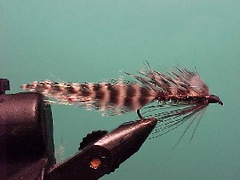
{{+1}}Matuka variant{{-1}}
{{start}}
Developed in New Zealand to represent a small fish Matuka style flies were originally tied with feathers from a kind of heron called a "bittern" or in the Maoris language "Matuka". They work well as a stripping fly in situations where bait fish may be on the menu and the most popular colours in Australia is black / red and brown / brown.{{end}}

{{+1}}Woolly bugger{{-1}}
{{start}}
The Woolly Bugger is perhaps the quintessential streamer fly and has its origins in America ..... there is also an English fly with bead chin eyes called a Dog Nobler that is very similar. Whatever the name or origin this style of fly is a great fish taker in a wide range of conditions. There are probably more variations to the Woolly Bugger than I have had breakfasts. Some are over-dressed some under-dressed, some weighted other not, on all sorts of hooks and in all sorts of colour combinations. I carry black, brown and olive versions.{{end}}

{{+1}}Mudeye – Chatto original{{-1}}
{{start}}
Most fly fishers will have one or more flies that they use to represent Mudeyes and these include Craigs Night-time, Tie Happy Tickler and Micks Mudeye. An alternative Mudeye representation is set out below. It incorporates many of the features of the flies mentioned above and utilizes two of my favorite fly tying materials, Peacock herl and Ring neck Pheasant (Church Window) feathers.{{end}}
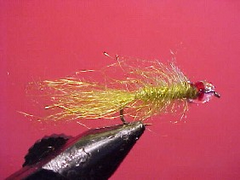
{{+1}}BMS (Bullen Mary Special){{-1}}
{{start}}
At the 2003 Australian Fly Fishing Championships held at Mt. Beauty this was one of the few flies that produced more than one fish. It is a favorite fly at Lake Bullen Merri where it gets its name BM Special. Because of its history of success it is often regarded as a quintessential Rainbow trout fly by many Victorian fly fishers.{{end}}
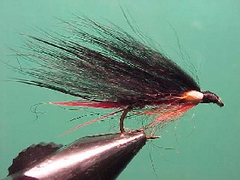
{{+1}}Yeti variant{{-1}}
{{start}}
In its larger sizes, this fly fishes well and is equally at home fished as either a general prospecting fly retrieved slow and deep around weedy margins or as a fly for windy conditions where it can be allowed to slosh around for a few seconds and then can be slowly retrieved or as a point or attractor fly in a loch style fishing team of flies. In windier conditions it also works well when ripped across the surface.{{end}}













